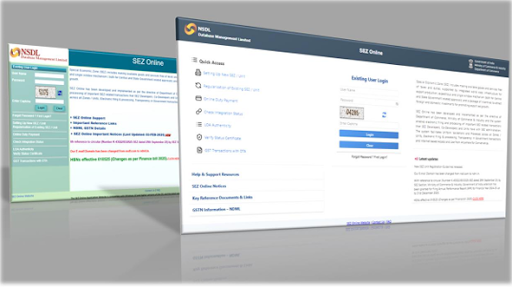Understanding the Derivatives Market at India INX: A Comprehensive Guide
- GIFT CFO
- Jul 25
- 3 min read
Updated: Aug 7
📌 Introduction
The India International Exchange (India INX), located in GIFT City, Gujarat, is India’s first international exchange and a vital part of the country’s push to establish a global financial hub. One of its most dynamic offerings is derivatives trading, governed under a robust regulatory framework by the International Financial
Services Centres Authority (IFSCA).
This blog post unpacks key concepts such as derivative contracts, margin requirements, risk management, trading protocols, and investor protections — as outlined in the Rules and Regulations Handbook — and explains how India INX operates within the broader financial ecosystem.

📘 What Are Derivatives?
Derivatives are financial instruments whose value is derived from an underlying asset such as stocks, currencies, commodities, or indices.
✳️ Common Derivative Products at India INX:
Futures Contracts (e.g., Nifty futures, currency futures)
Options Contracts
Commodity Derivatives
Interest Rate Derivatives
Debt Derivatives
Depository Receipts
📌 Example:
An investor might enter into a currency futures contract to lock in an exchange rate for USD-INR three months from now, protecting against currency fluctuation.
📉 Margin and Risk Management
🛡️ Margin Requirements
Participants in derivatives trading must maintain adequate margin as a buffer against potential losses. These margins include:
Initial Margin – Required to open a position.
Maintenance Margin – Minimum balance to keep the position open.
Extreme Loss Margin (ELM) – Covers unexpected market volatility.
Calendar Spread Margin – For positions across different maturities.
⚠️ Default Scenarios
If a trader fails to maintain the required margin:
The position may be squared off by the clearing corporation.
Penalties and additional margins may be imposed.
🔁 Clearing & Settlement Mechanism
India INX uses a T+1 or T+2 rolling settlement cycle, depending on the product. Settlement is conducted in foreign currency, with the India ICC (India Clearing Corporation) ensuring risk mitigation and proper execution.
Settlement Process:
Trade execution on India INX.
Position matched and netted.
Funds and securities exchanged via clearing members.
Give-Up/Take-Up Facility:
Allows traders to allocate trades to multiple clients or custodians post-execution, increasing flexibility.
🏦 Regulatory Framework: Who Governs What?
⚖️ IFSCA – Apex Regulator
Oversees all financial products and services in IFSCs.
Empowers SEBI, RBI, IRDAI, and PFRDA for sector-specific regulation.
🧩 SEBI Regulations (Key Provisions):
Permits derivative contracts on equity, commodities, and currencies.
Provides liquidity enhancement schemes.
Sets limits for trading positions and prevents misuse.
💹 RBI Guidelines:
Enables rupee derivatives with foreign currency settlement.
Defines eligible participants (e.g., NRIs, FPIs).
Ensures foreign exchange compliance under FEMA, 1999.
🔍 Trading Protocols at India INX
📈 Who Can Trade?
Foreign Portfolio Investors (FPIs)
Eligible Foreign Investors (EFIs)
IFSC Banking Units
Domestic entities via LRS (Liberalised Remittance Scheme)
⏰ Market Timings
India INX operates 22 hours a day, aligned with global markets. This provides Indian investors exposure to international trading hours.
📊 Algorithmic Trading
Permitted with safeguards including:
Order-to-trade ratio limits
Real-time surveillance
Co-location regulations
🛡️ Investor Protection & Compliance
India INX and the clearing corporations have implemented strict measures to protect investors, such as:
Segregated Nominee Account Structures (SNAS): Ensures client funds are ring-fenced.
Cybersecurity Frameworks: Mandatory for exchanges and intermediaries.
Suspicious Transaction Reporting (STR): Mandated under PMLA & FATCA.
📋 Key Compliance Filings:
Bi-annual system audit
AI/ML usage declarations
LEI (Legal Entity Identifier) submission for clearing
🧭 Role of India INX in the Global Ecosystem
India INX serves as a gateway for global investors to participate in India’s growth story and for Indian entities to access global capital.
🌍 Why It Matters:
Facilitates foreign capital inflow through debt, equity, and derivatives.
Provides a level-playing field with international exchanges (via tax neutrality, 0% STT, etc.).
Enhances India’s competitiveness in global financial markets.
🧠 Summary & Takeaways
Feature | Description |
Regulatory Body | International Financial Services Centres Authority (IFSCA) |
Key Instruments | Equity Derivatives, Commodity Futures, Currency Options |
Risk Controls | Margining System, Penalty Norms, Settlement Guarantee Mechanism |
Settlement Currency | Foreign currency (e.g., USD) |
Trading Hours | 22 hours/day |
Investor Protections | STRs, Cybersecurity, Margin Monitoring, SNAS |
Role of India INX | International exposure, transparent regulations, global investor access |
✍️ Final Thoughts
India INX is revolutionizing how global investors engage with Indian markets. With cutting-edge infrastructure, liberalized regulations, and strong risk controls, its derivatives segment stands as a robust platform for hedging, speculation, and investment.
Whether you're a seasoned trader or a curious investor, understanding the rules, margins, settlements, and protections in place at India INX can empower you to navigate this dynamic landscape more confidently.


























































































Comments